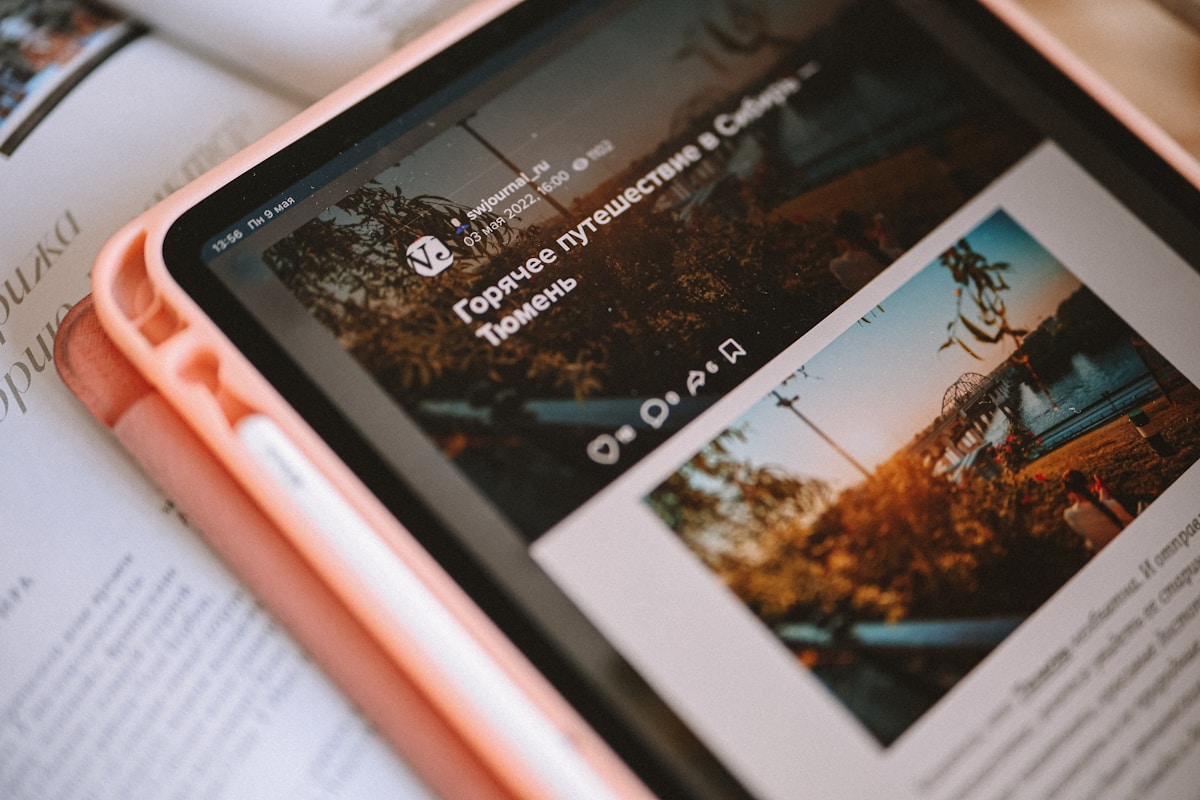Time Mastery For Bloggers: How To Schedule Your Blog Post For Maximum Impact
Time Mastery For Bloggers: How To Schedule Your Blog Post For Maximum Impact

Time management is key for maintaining a consistent and engaging online presence as a blogger. You can maximize your reach and impact on your audience by scheduling your blog posts effectively. In this guide, we'll explore the importance of time management for bloggers, the benefits of scheduling blog posts, and an overview of the various scheduling tools available to help you streamline your content creation process.
Importance Of Time Management For Bloggers
Managing your time effectively as a blogger is essential for staying organized and maintaining a steady flow of fresh content.
Benefits Of Scheduling Blog Posts
Overview Of Scheduling Tools Available
Numerous tools and platforms are designed to schedule your blog post efficiently. From built-in features on popular website builders to dedicated social media management tools, these resources offer a range of options to suit different blogging needs.
Understanding Your Audience
Understanding your audience is crucial for successful blogging. You can strategically schedule your blog posts to reach maximum readers by identifying peak traffic times. Tailoring your content to audience preferences ensures that your posts resonate with your readers and keep them returning for more. Utilizing analytics to inform scheduling decisions allows you to make data-driven choices that optimize your blog's impact.
Identifying Peak Traffic Times
Attention to the content types performing well during peak traffic is also important. Use your analytics tools to see which blog posts or social media posts are getting the most engagement, and then tailor your future content to match those trends. You can maximize your reach and impact by consistently delivering content that echoes with your audience during their most active times.
Tailoring Content To Audience Preferences
Understanding what type of content echoes with your audience is vital for building a loyal readership. Pay attention to which topics and formats generate the most engagement, and use this information to guide your content creation and scheduling decisions.
It's also important to interact with your audience and ask for their feedback on what content they enjoy the most. Your material may be better tailored to fit the demands of your audience by taking into account their preferences, which can provide you with useful information. Furthermore, try out various content formats and observe how your audience reacts. You might be surprised by what appeals to them!
Utilizing Analytics To Inform Scheduling Decisions
Analytics provide valuable insights into reader behavior, allowing you to decide when to schedule blog posts for maximum impact. Use data on page views, bounce rates, and time spent on the page to refine your posting schedule your blog post and optimize reader engagement. You can effectively tailor your blogging schedule and content strategy for maximum impact by understanding your audience's behavior and preferences.
Schedule Your Blog Post - Creating A Consistent Blog Post Schedule

To effectively manage your blog, it's crucial to establish a content calendar that outlines when each post will be published. You can ensure a steady flow of content for your audience while allowing yourself time to plan and create high-quality posts by scheduling your blog posts in advance.
Establishing A Content Calendar
Creating a content calendar involves mapping the topics and publication dates for upcoming blog posts. A content calendar lets you see the big picture and strategically plan your content. You can also ensure a well-rounded mix of topics catering to your audience's interests by scheduling your blog posts in advance.
Setting Realistic Posting Frequencies
When setting posting frequencies for your blog, it's important to balance consistency and quality. Consider factors such as the time it takes to produce each post and the level of engagement you want to maintain with your audience. You can avoid burnout while keeping your readers engaged by scheduling your blog posts at realistic intervals.
Balancing Quality And Quantity
While it's important to maintain a consistent posting schedule, quality should always take precedence over quantity. Scheduling your blog posts should involve careful consideration of the value each post brings to your audience. Limelight creates high-quality content that resonates with readers rather than churning out numerous low-value posts.
Remember that the key is not just about sticking to schedule your blog post but also about delivering valuable and engaging content consistently. You can create an effective blogging schedule that satisfies you and your audience by planning and finding the right balance between frequency and quality.
Schedule Your Blog Post - Optimizing For SEO

When it comes to optimizing your blog for search engines, strategic keyword placement is crucial. Ensure you naturally incorporate your target keywords throughout your content to upgrade its visibility and ranking. You can signal to search engines what your blog post is about and increase the chances of it being discovered by your target audience by strategically placing keywords in your headers, subheadings, and body text.
Strategic Keyword Placement
To optimize your blog for SEO, include your target keywords in the title of your blog post and the first paragraph. Additionally, sprinkle them throughout the body of your content while maintaining a natural flow. Strategic keyword placement will signal to search engines that your content is relevant and valuable to users searching for those specific keywords.
Remember to use variations of your target keywords to avoid sounding repetitive and capture a wider range of search queries, including synonyms, related terms, or long-tail keywords relevant to your topic.
Utilizing Meta Descriptions And Tags
In addition to strategically placing keywords within your content, optimizing meta descriptions and tags can significantly impact how search engines interpret and display your blog posts. Craft compelling meta descriptions that include relevant keywords, enticing users to click through to read more. Use tags that accurately reflect the topics covered in each post, making it easier for search engines to categorize and index them.
Incorporating Internal And External Links
Another key aspect of SEO optimization is incorporating internal and external links within your blog posts. Internal links help establish a hierarchy within your website while directing traffic to other relevant pages. On the other hand, external links provide additional context and credibility by linking to reputable sources or related content on other websites.
You can increase their visibility and relevance in search engine results pages (SERPs) by optimizing your blog posts for SEO through keyword placement, meta descriptions and tags, and internal and external linking strategies.
Schedule Your Blog Post - Utilizing Scheduling Tools

Scheduling your blog posts in advance can help you maintain a consistent posting schedule and reach your audience optimally. Utilizing scheduling tools can streamline the process and ensure your content is published when it will have the greatest impact. Here are steps you can take and tools you can use to schedule your blog posts:
Choose a Blogging Platform
- Many popular blogging platforms like WordPress, Blogger, and Medium have built-in scheduling features.
Write and Edit Your Blog Post
- Create your blog post and ensure it's thoroughly edited and formatted before scheduling.
Select a Publishing Date and Time
- Identify the best times to publish your content based on your audience's demographics and behavior.
- Consider time zones to reach a broader audience.
Use Built-In Scheduling Features
- If you're using a blogging platform, utilize its scheduling feature to set the publication date and time.
- In WordPress, for example, you can find the "Publish" box on the right-hand side of the editor, where you can set the date and time.
Social Media Scheduling
- Share your blog post on social media to increase its reach.
- Use social media scheduling tools like Hootsuite, Buffer, or Later to plan and schedule your posts across different platforms.
Email Newsletter Scheduling
- If you have an email newsletter, schedule a corresponding email to be sent when your blog post goes live.
- Email marketing tools like Mailchimp, Constant Contact, or Sendinblue offer scheduling features.
Google Calendar Integration
- Consider integrating your blogging schedule with Google Calendar.
- You can create events for each blog post and set reminders for various promotional activities.
Content Calendar
- Maintain a content calendar to plan and organize your blog posts in advance.
- Tools like Trello, Asana, or CoSchedule can help you manage your content schedule and collaborate with team members.
Automated Publishing Tools
- Explore tools that allow you to automate the publishing process across multiple platforms.
- Zapier is a platform that enables you to create automated workflows, including publishing blog posts and sharing them on social media.
RSS Feeds and Automation
- Use RSS feeds to automatically share new blog posts on platforms like Twitter or Facebook.
- Tools like dlvr.it or IFTTT (If This Then That) can help you create automation between your blog and social media channels.
Queue Management
- If you're scheduling multiple posts, manage your queue to avoid overwhelming your audience.
- Buffer and CoSchedule offer queue management features to help you maintain a consistent posting frequency.
Monitor and Adjust
- Keep an eye on the performance of your scheduled posts.
- Use analytics tools to understand when your audience is most active and adjust your posting schedule accordingly.
Remember to engage with your audience after publishing. Respond promptly to comments, questions, and feedback to foster community around your blog. Regularly assess the performance of your scheduled posts and refine your strategy based on audience behavior and preferences.
Schedule Your Blog Post - Maximizing Impact
It's essential to leverage social media promotion to maximize the impact of your blog posts. Schedule and share your blog post across all your social media platforms to expand your audience and drive traffic to your website. Engaging with readers at peak times is crucial for increasing visibility and interaction. Respond to comments, ask questions, and encourage discussions during these peak times to keep your audience engaged.
Leveraging Social Media Promotion
Use social media scheduling applications like Buffer or Hootsuite to plan the best times to publish your blog entries on various platforms. Use pertinent hashtags and write captivating subtitles to draw viewers' attention to your material. You may raise awareness of your blog and improve website traffic by continuously advertising it on social media.
Remember to interact with your followers on social media by answering their questions and comments. Developing a rapport with your audience might result in a committed and devoted readership for your blog. Consider teaming with other bloggers or influencers in your niche to increase your reach and attract new followers interested in your material.
Engaging With Readers At Peak Times
Determine the peak hours when your audience is online and most engaged, and try to interact with them at these times. In addition to increasing reader loyalty, answering questions, promoting dialogue, and leaving comments can all help your blog postings have a greater overall impact.
It's also important to pay attention to the type of content that resonates most with your audience during these peak times. Analyze which topics or formats generate the most engagement and tailor your content strategy accordingly. You can further solidify your relationship with your audience and establish yourself as a trusted source in your niche by consistently delivering valuable and relevant content during these active periods.
Monitoring And Adjusting Posting Schedule
Keep a close eye on the performance of your scheduled blog posts using analytics tools such as Google Analytics or social media insights. Monitor engagement metrics like likes, shares, comments, and click-through rates to understand what content resonates with your audience. Use this data to schedule your blog post and adjust for maximum impact.
You can maximize the impact of each scheduled blog post while building a strong online presence for your blog by effectively leveraging social media promotion, engaging with readers at peak times, and monitoring/adjusting posting schedules.
Blogging With Strikingly
Step 1: Sign Up And Choose a Plan
- Go to the Strikingly website.
- Sign up for an account or log in if you already have one.
- Choose a plan that suits your needs. Strikingly offers free and paid plans with varying features.

Image taken from Strikingly
Step 2: Create a New Site
- Once logged in, click on "Create New Site."
- Choose a template that fits the style you want for your blog. Strikingly offers a variety of templates to choose from.

Image taken from Strikingly
Step 3: Set Up Your Blog
- After selecting a template, you'll be taken to the website editor.
- Look for a section or feature related to blogging. Strikingly often has a specific section for blog creation.

Image taken from Strikingly
Step 4: Customize Your Blog
- Edit the content of your blog posts by clicking on the text boxes and images. Customize fonts, colors, and other design elements to match your brand or style.

Image taken from Strikingly
- Add new sections or remove existing ones according to your preferences.
Step 5: Create and Publish a Blog Post
- Find the option to add a new blog post.
- Write your blog post using the text editor. Strikingly provides a user-friendly editor that allows you to format text, add images, and embed media.

Image taken from Strikingly
- Preview your post to see how it will look on your website.
- Once satisfied, click the "Publish" or "Save" button to make your blog post live.
Step 6: Customize Blog Settings
- Explore the blog settings to customize the title, URL, and metadata.
- Configure other settings, including social sharing options and comment settings.

Image taken from Strikingly
Step 7: Manage Blog Posts
- Use the blog management section to view and edit existing blog posts.
- You can organize posts by categories and tags to enhance navigation.
Step 8: SEO Optimization
- Optimize your blog posts for search engines by adding relevant keywords to your content.
- Utilize meta titles and descriptions to improve your blog's visibility on search engine results pages.

Image taken from Strikingly
Step 9: Connect a Domain (Optional)
- If you're on a paid plan, you can connect a custom domain to give your blog a professional look (e.g., www.yourblog.com).
Step 10: Promote Your Blog
- Share your blog posts on social media to drive traffic.
- Engage with your audience by responding to comments and promoting discussions.
Tips for Blogging with Strikingly
- Explore Additional Features - Strikingly offers various features like forms, galleries, and eCommerce. Explore these to enhance your blog.
- Mobile Optimization - Ensure that your blog looks good on mobile devices by using Strikingly's mobile editing tools.
- Regular Updates - Keep your blog fresh by regularly adding new content.
- Analytics - Use Strikingly's analytics tools to track the performance of your blog.
- Community Support - Strikingly has a community forum to find tips, ask questions, and connect with other users.
Blogging with Strikingly provides an accessible and user-friendly platform for individuals and small businesses. Experiment with the features to create a blog that suits your needs and resonates with your audience.
Conclusion
Creating a consistent and well-thought-out blogging schedule is crucial for maintaining an engaged audience and maximizing your impact as a blogger. Scheduling your blog posts allows you to manage your time effectively by allocating specific time slots for writing and editing. Time management helps you avoid last-minute rushes and gives you enough time to produce well-crafted content.
Schedule your blog post in a way that allows you to engage with readers at peak times and maximize the impact of your posts. Altogether, by carefully planning your blogging schedule, implementing effective time management strategies, and harnessing the power to schedule your blog post, you can take your blog to new heights and connect with more readers than ever.
